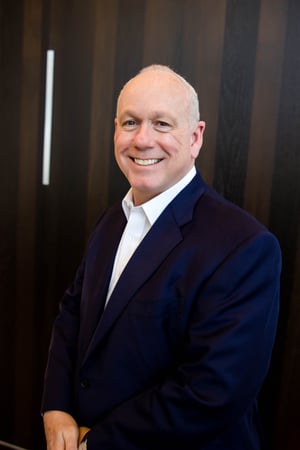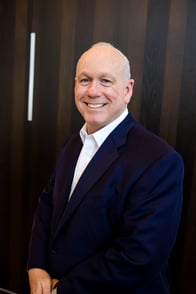

The ESOP Group at Morgan Stanley
Direct:
(833) 822-1042(833) 822-1042

Our Mission Statement
Helping Business Owners Access Their Wealth, Maintain Their Legacy, and Reward Their Employees Through Employee Stock Ownership Plans and Other Exit Strategies.
Our Approach
Owners of privately held businesses who have dedicated their lives to growing their companies, often have not taken a deep introspective look at their succession planning objectives. For business owners, these objectives combined with the goals for the company, employees, and family are critical to an overall strategic plan to enhance the value of the company as they prepare to exit the business.
As Financial Advisors, we work closely with business owners (in tandem with their Private Wealth Advisor) to ensure that their business succession objectives align with the best liquidity alternative, to maximize value for the shareholder and diversify their wealth.
ESOP transactions are often an excellent alternative for business owners and provide significant benefits to the employees, the company and to the business owners. An ESOP is a qualified retirement benefit plan that allows employees to own shares of their company's stock that are converted to cash when they retire. The overall impact of employee ownership is designed to benefit employees who remain with the company and contribute the most to the company’s future success.
We help business owners assess their individual needs and goals to determine if an ESOP is the right choice for them. We also provide guidance and support throughout the ESOP process.
As Financial Advisors, we work closely with business owners (in tandem with their Private Wealth Advisor) to ensure that their business succession objectives align with the best liquidity alternative, to maximize value for the shareholder and diversify their wealth.
ESOP transactions are often an excellent alternative for business owners and provide significant benefits to the employees, the company and to the business owners. An ESOP is a qualified retirement benefit plan that allows employees to own shares of their company's stock that are converted to cash when they retire. The overall impact of employee ownership is designed to benefit employees who remain with the company and contribute the most to the company’s future success.
We help business owners assess their individual needs and goals to determine if an ESOP is the right choice for them. We also provide guidance and support throughout the ESOP process.
Check the background of Our Firm and Investment Professionals on FINRA's BrokerCheck.*
What is an ESOP?

An Employee Stock Ownership Plan is a qualified defined contribution employee benefit plan, much like a traditional profit-sharing plan. However, an ESOP is unique among qualified benefit plans in its ability to borrow money. In that way, an ESOP can be used as a corporate finance technique that provides liquidity to business owners.
Through an ESOP, business owners can achieve partial or total liquidity and diversification, usually in a tax-advantaged manner. At the same time, the ESOP can benefit employees by making them stockholders in their company. In fact, an ESOP is the only mechanism that offers a meaningful benefit to employees, while providing private business owners with a market for their stock and companies with a means of borrowing money in a tax- advantaged fashion.
Business owners look to ESOPs as an attractive liquidity alternative, one they can use to take some or all of their "chips" off the table, providing liquidity to the owner in a tax-advantaged manner. The strategy permits them to diversify their wealth, yet allows them to remain involved in their business if they so desire. As baby boomer business owners age, they are redefining retirement, often with an interest in remaining at least partially involved in their business. For this new generation of "semiretirees," ESOPs may be one solution.
For more detailed information on ESOPs, please see our team brochure.
Through an ESOP, business owners can achieve partial or total liquidity and diversification, usually in a tax-advantaged manner. At the same time, the ESOP can benefit employees by making them stockholders in their company. In fact, an ESOP is the only mechanism that offers a meaningful benefit to employees, while providing private business owners with a market for their stock and companies with a means of borrowing money in a tax- advantaged fashion.
Business owners look to ESOPs as an attractive liquidity alternative, one they can use to take some or all of their "chips" off the table, providing liquidity to the owner in a tax-advantaged manner. The strategy permits them to diversify their wealth, yet allows them to remain involved in their business if they so desire. As baby boomer business owners age, they are redefining retirement, often with an interest in remaining at least partially involved in their business. For this new generation of "semiretirees," ESOPs may be one solution.
For more detailed information on ESOPs, please see our team brochure.
Location
233 South Wacker Drive
STE 8600
Chicago, IL 60606
US
Direct:
(833) 822-1042(833) 822-1042
1080 Jordan Creek Parkway
STE 400N
West Des Moines, IA 50266
US
Direct:
(515) 283-7008(515) 283-7008
8383 Preston Center Plaza Suite 400
Dallas, TX 75225
US
Direct:
(972) 849-0897(972) 849-0897
55 East 52nd Street
Floor 15
New York, NY 10055
US
Meet The ESOP Group
About William O'Brien
Bill is a Co-head of The ESOP Group at Morgan Stanley, where he has been focusing on ESOPs and capital markets since 1989. He has over 30 years of experience in helping business owners and corporations, including several in the Fortune 100, in areas such as:
• Corporate liquidity transactions
• Business succession planning
• Retirement plan design
• Employee financial education
Bill is particularly experienced in assisting business owners who have completed or are contemplating an ESOP. He has a deep understanding of the complexities of Internal Revenue Code Section 1042, equity risk management, and tax-advantaged strategies. He has successfully completed over 500 ESOP transactions.
• Corporate liquidity transactions
• Business succession planning
• Retirement plan design
• Employee financial education
Bill is particularly experienced in assisting business owners who have completed or are contemplating an ESOP. He has a deep understanding of the complexities of Internal Revenue Code Section 1042, equity risk management, and tax-advantaged strategies. He has successfully completed over 500 ESOP transactions.
Securities Agent: DC, FL, GA, HI, IA, ID, IL, IN, KS, KY, LA, MA, MD, ME, MI, MN, MO, MT, NC, ND, NE, NH, NJ, NM, NV, NY, OH, OK, OR, PA, RI, SC, SD, TN, TX, UT, VA, VT, WA, WI, WV, WY, DE, MS, AK, AL, AR, AZ, CA, CO, CT; BM/Supervisor; General Securities Representative; Investment Advisor Representative; Managed Futures
NMLS#: 1278976
NMLS#: 1278976
About Bryan Boesen
Bryan is a Financial Advisor with Morgan Stanley, where he has been providing consulting services to institutional and private clients since 1999. He has extensive experience working with nonprofits, developing sound investment strategies, and creating income streams by leveraging the resources available at Morgan Stanley. Bryan also assists affluent individuals and families with wealth planning to help secure their legacy.
For many years, Bryan has worked exclusively with privately owned, mid-sized companies, nonprofits, and affluent individuals and families. This experience has given him a deep understanding of the dynamics of closely held and family-owned businesses. His retirement services resources provide counsel and objectivity to help implement a plan designed to be the most effective for the company.
Specifically, Bryan's capabilities include helping businesses implement employee stock ownership plans (ESOPs), understanding the complexities of Internal Revenue Code Section 1042, and leveraging equity risk management and tax advantaged strategies.
For many years, Bryan has worked exclusively with privately owned, mid-sized companies, nonprofits, and affluent individuals and families. This experience has given him a deep understanding of the dynamics of closely held and family-owned businesses. His retirement services resources provide counsel and objectivity to help implement a plan designed to be the most effective for the company.
Specifically, Bryan's capabilities include helping businesses implement employee stock ownership plans (ESOPs), understanding the complexities of Internal Revenue Code Section 1042, and leveraging equity risk management and tax advantaged strategies.
Securities Agent: MT, NV, NM, VT, ID, DC, NH, MN, NY, OH, NJ, IL, OK, OR, SC, TX, UT, TN, WA, WI, KS, KY, MA, WY, IN, MI, ME, NC, MS, ND, WV, HI, AZ, CO, VA, CT, SD, AR, GA, RI, PA, FL, NE, MO, MD, LA, IA, DE, CA, AL, AK; BM/Supervisor; General Securities Representative; Investment Advisor Representative; Transactional Futures/Commodities; Managed Futures
NMLS#: 1278811
NMLS#: 1278811
About Jessica Banas
Jessica has been with The ESOP Group since 2016 and has held various roles within the team prior to operating
as the COO of the group. Jessica manages the business operations and oversees the essential activities of the
team’s service organization.
Jessica oversees the development, implementation, and management of the team’s strategic plan to ensure
the alignment of team priorities and business goals. She also serves as a Market Service Coach within the Firm and has extensive experience with the Morgan Stanley ecosystem. She has strong relationships throughout the firm that she utilizes to advocate for a superior client experience.
Jessica graduated from the University of Illinois Urbana-Champaign with a B.S. in Finance and is SIE, Series 66,
and Series 7 licensed. She currently resides in Chicago and enjoys traveling with family and friends.
as the COO of the group. Jessica manages the business operations and oversees the essential activities of the
team’s service organization.
Jessica oversees the development, implementation, and management of the team’s strategic plan to ensure
the alignment of team priorities and business goals. She also serves as a Market Service Coach within the Firm and has extensive experience with the Morgan Stanley ecosystem. She has strong relationships throughout the firm that she utilizes to advocate for a superior client experience.
Jessica graduated from the University of Illinois Urbana-Champaign with a B.S. in Finance and is SIE, Series 66,
and Series 7 licensed. She currently resides in Chicago and enjoys traveling with family and friends.
About Jack Kroger
Jack joined The ESOP Group as a Client Relationship Associate and plays an integral role in supporting analytical and key needs throughout 1042 ESOP transactions. He is responsible for various analytical reports and manages the lifecycle of the entire sales process, from lead generation to closing deals, in support of the Financial Advisors.
Prior to Morgan Stanley, Jack was a part of the institutional investment advisory arm at Aon working with large, qualified plans. He graduated from Lake Forest College, double majoring in Finance and Math. Jack has obtained his SIE and Series 7 and is actively working towards becoming fully licensed.
Jack is a Culver Military Academy 2016 alumni, enjoys golf, and plays the drums.
Prior to Morgan Stanley, Jack was a part of the institutional investment advisory arm at Aon working with large, qualified plans. He graduated from Lake Forest College, double majoring in Finance and Math. Jack has obtained his SIE and Series 7 and is actively working towards becoming fully licensed.
Jack is a Culver Military Academy 2016 alumni, enjoys golf, and plays the drums.
About Roxana Rosales
Roxana serves as The ESOP Groups Executive Administrator. She provides essential support for the team including advisor time management and logistical needs. She coordinates various events and marketing efforts both externally and internally, highlighting our capabilities as a National Strategic Partner within the firm.
Roxana graduated with a B.A. in Education from Governors State University and is passionate about sharing her knowledge of the team’s resources and assisting others. She brings with her ten years of elevated client service experience in the banking industry. She holds her SIE and is currently working towards attaining her Series 66 and Series 7 licenses.
During her down time, she enjoys traveling with her husband, Chris, exploring new restaurants, staying active, and spending quality time with her two cockapoos, Leo and Bruno.
Roxana graduated with a B.A. in Education from Governors State University and is passionate about sharing her knowledge of the team’s resources and assisting others. She brings with her ten years of elevated client service experience in the banking industry. She holds her SIE and is currently working towards attaining her Series 66 and Series 7 licenses.
During her down time, she enjoys traveling with her husband, Chris, exploring new restaurants, staying active, and spending quality time with her two cockapoos, Leo and Bruno.
About Isabelle OBrien
Isabelle joined The ESOP Group as an analyst and primarily supports ESOP Termination and ongoing workplace wealth education services. She also assists with 1042 ESOP transaction analytics and nurtures essential partnerships the team has fostered.
Prior to Isabelle's current role, she gained experience as an analyst at Blue Hippo ESOP Advisors where she specialized in valuation modeling. Isabelle graduated from Lehigh University with a B.S. in Finance and holds her SIE, Series 63, and Series 65.
Outside of work, she enjoys reading, solving Rubik's cubes, and spending time at the beach.
Prior to Isabelle's current role, she gained experience as an analyst at Blue Hippo ESOP Advisors where she specialized in valuation modeling. Isabelle graduated from Lehigh University with a B.S. in Finance and holds her SIE, Series 63, and Series 65.
Outside of work, she enjoys reading, solving Rubik's cubes, and spending time at the beach.

Contact William O'Brien

Contact Bryan Boesen
Wealth Management
Global Investment Office
Portfolio Insights
This is a video content
Financial Wellness
Enhancing Financial Wellness enables your workforce to do their best work. Companies that invest in financial wellness have an opportunity to:
- Reduce employee stress,
- Improve retention and engagement, and
- Set themselves apart by offering comprehensive financial wellness benefits.
Ready to start a conversation? Contact The ESOP Group today.
Check the background of our Firm and Investment Professionals on FINRA's BrokerCheck*.
The information, products and services described here are intended only for individuals residing in states where this Financial Advisor is properly registered as described in this site.
Morgan Stanley reserves the right, to the extent permitted under applicable law, to retain and monitor all electronic communications. Morgan Stanley will not accept purchase or sale orders via any Internet site, social media site and/or its messaging systems. Morgan Stanley does not endorse and is not responsible and assumes no liability for content, products or services posted by third-parties on any Internet site, social media site and/or its messaging systems. All electronic communications are subject to terms available at the following link:
https://www.morganstanley.com/disclaimers/mswm-email.html. Any profiles and associated content are for U.S. residents only.
The securities/instruments, services, investments and investment strategies discussed in this material may not be appropriate for all investors. The appropriateness of a particular investment, investment strategy or service will depend on an investor's individual circumstances and objectives. Morgan Stanley Smith Barney LLC recommends that investors independently evaluate particular investments, strategies and services, and encourages investors to seek the advice of a Financial Advisor or Private Wealth Advisor. This material does not provide individually tailored investment advice. It has been prepared without regard to the individual financial circumstances and objectives of persons who receive it.
Morgan Stanley Smith Barney LLC (“Morgan Stanley”), its affiliates and Morgan Stanley Financial Advisors or Private Wealth Advisors do not provide tax or legal advice. Individuals should consult their tax advisor for matters involving taxation and tax planning and their attorney for legal matters.
Morgan Stanley Smith Barney LLC (“Morgan Stanley”) is not implying an affiliation, sponsorship, endorsement with/of the third party or that any monitoring is being done by Morgan Stanley of any information contained within the website. Morgan Stanley is not responsible for the information contained on the third-party website or the use of or inability to use such site. Nor do we guarantee their accuracy or completeness.
The views, opinions or advice contained within third party websites or materials are solely those of the author, who is not a Morgan Stanley employee, and do not necessarily reflect those of Morgan Stanley Smith Barney LLC, or its affiliates. The strategies and/or investments referenced may not be appropriate for all investors as the appropriateness of a particular investment or strategy will depend on an investor's individual circumstances and objectives.
*References to length of service at Morgan Stanley include years at Morgan Stanley and predecessor firms.
Certified Financial Planner Board of Standards Center for Financial Planning, Inc. owns and licenses the certification marks CFP®, CERTIFIED FINANCIAL PLANNER®, and CFP® (with plaque design) in the United States to Certified Financial Planner Board of Standards, Inc., which authorizes individuals who successfully complete the organization's initial and ongoing certification requirements to use the certification marks.
The use of the CDFA designation does not permit the rendering of legal advice by Morgan Stanley or its Financial Advisors which may only be done by a licensed attorney. The CDFA designation is not intended to imply that either Morgan Stanley or its Financial Advisors are acting as experts in this field.
Awards Disclosures | Morgan Stanley
The information, products and services described here are intended only for individuals residing in states where this Financial Advisor is properly registered as described in this site.
Morgan Stanley reserves the right, to the extent permitted under applicable law, to retain and monitor all electronic communications. Morgan Stanley will not accept purchase or sale orders via any Internet site, social media site and/or its messaging systems. Morgan Stanley does not endorse and is not responsible and assumes no liability for content, products or services posted by third-parties on any Internet site, social media site and/or its messaging systems. All electronic communications are subject to terms available at the following link:
https://www.morganstanley.com/disclaimers/mswm-email.html. Any profiles and associated content are for U.S. residents only.
The securities/instruments, services, investments and investment strategies discussed in this material may not be appropriate for all investors. The appropriateness of a particular investment, investment strategy or service will depend on an investor's individual circumstances and objectives. Morgan Stanley Smith Barney LLC recommends that investors independently evaluate particular investments, strategies and services, and encourages investors to seek the advice of a Financial Advisor or Private Wealth Advisor. This material does not provide individually tailored investment advice. It has been prepared without regard to the individual financial circumstances and objectives of persons who receive it.
Morgan Stanley Smith Barney LLC (“Morgan Stanley”), its affiliates and Morgan Stanley Financial Advisors or Private Wealth Advisors do not provide tax or legal advice. Individuals should consult their tax advisor for matters involving taxation and tax planning and their attorney for legal matters.
Morgan Stanley Smith Barney LLC (“Morgan Stanley”) is not implying an affiliation, sponsorship, endorsement with/of the third party or that any monitoring is being done by Morgan Stanley of any information contained within the website. Morgan Stanley is not responsible for the information contained on the third-party website or the use of or inability to use such site. Nor do we guarantee their accuracy or completeness.
The views, opinions or advice contained within third party websites or materials are solely those of the author, who is not a Morgan Stanley employee, and do not necessarily reflect those of Morgan Stanley Smith Barney LLC, or its affiliates. The strategies and/or investments referenced may not be appropriate for all investors as the appropriateness of a particular investment or strategy will depend on an investor's individual circumstances and objectives.
*References to length of service at Morgan Stanley include years at Morgan Stanley and predecessor firms.
Certified Financial Planner Board of Standards Center for Financial Planning, Inc. owns and licenses the certification marks CFP®, CERTIFIED FINANCIAL PLANNER®, and CFP® (with plaque design) in the United States to Certified Financial Planner Board of Standards, Inc., which authorizes individuals who successfully complete the organization's initial and ongoing certification requirements to use the certification marks.
The use of the CDFA designation does not permit the rendering of legal advice by Morgan Stanley or its Financial Advisors which may only be done by a licensed attorney. The CDFA designation is not intended to imply that either Morgan Stanley or its Financial Advisors are acting as experts in this field.
Awards Disclosures | Morgan Stanley
CRC 4665150 (8/2025)
























